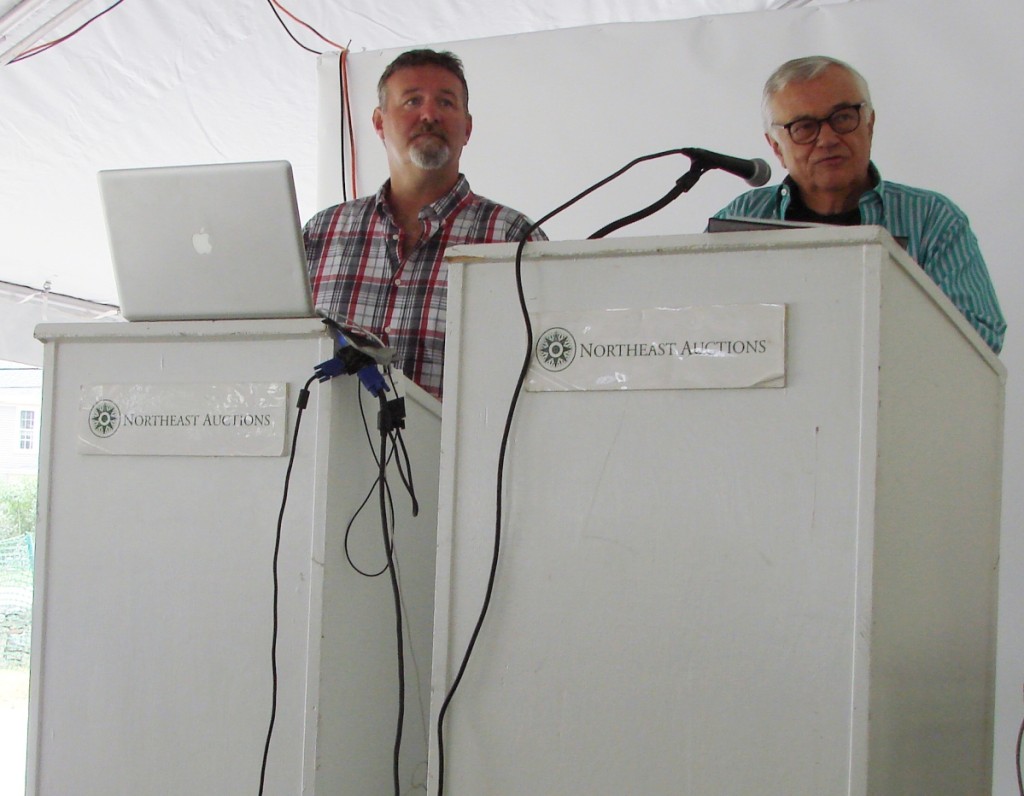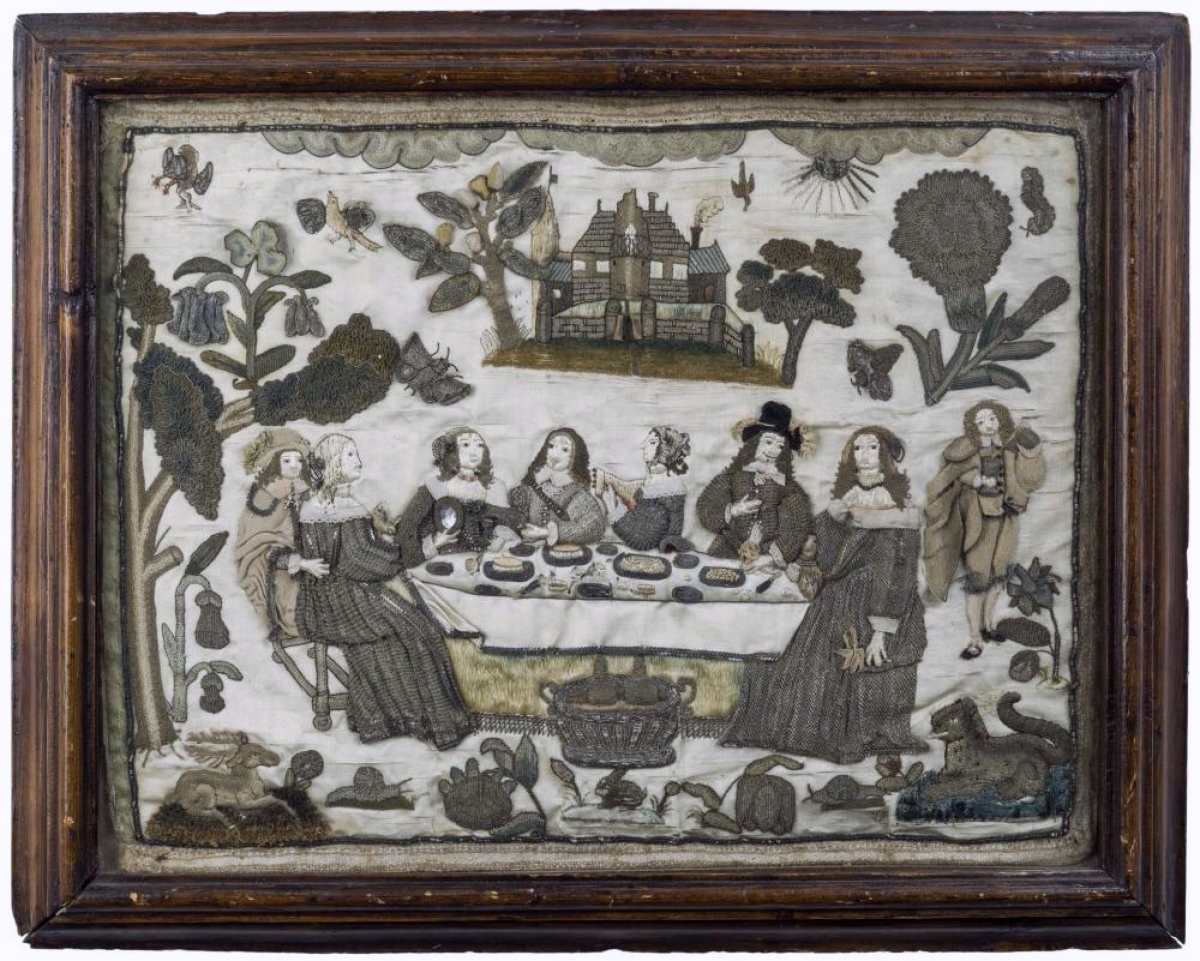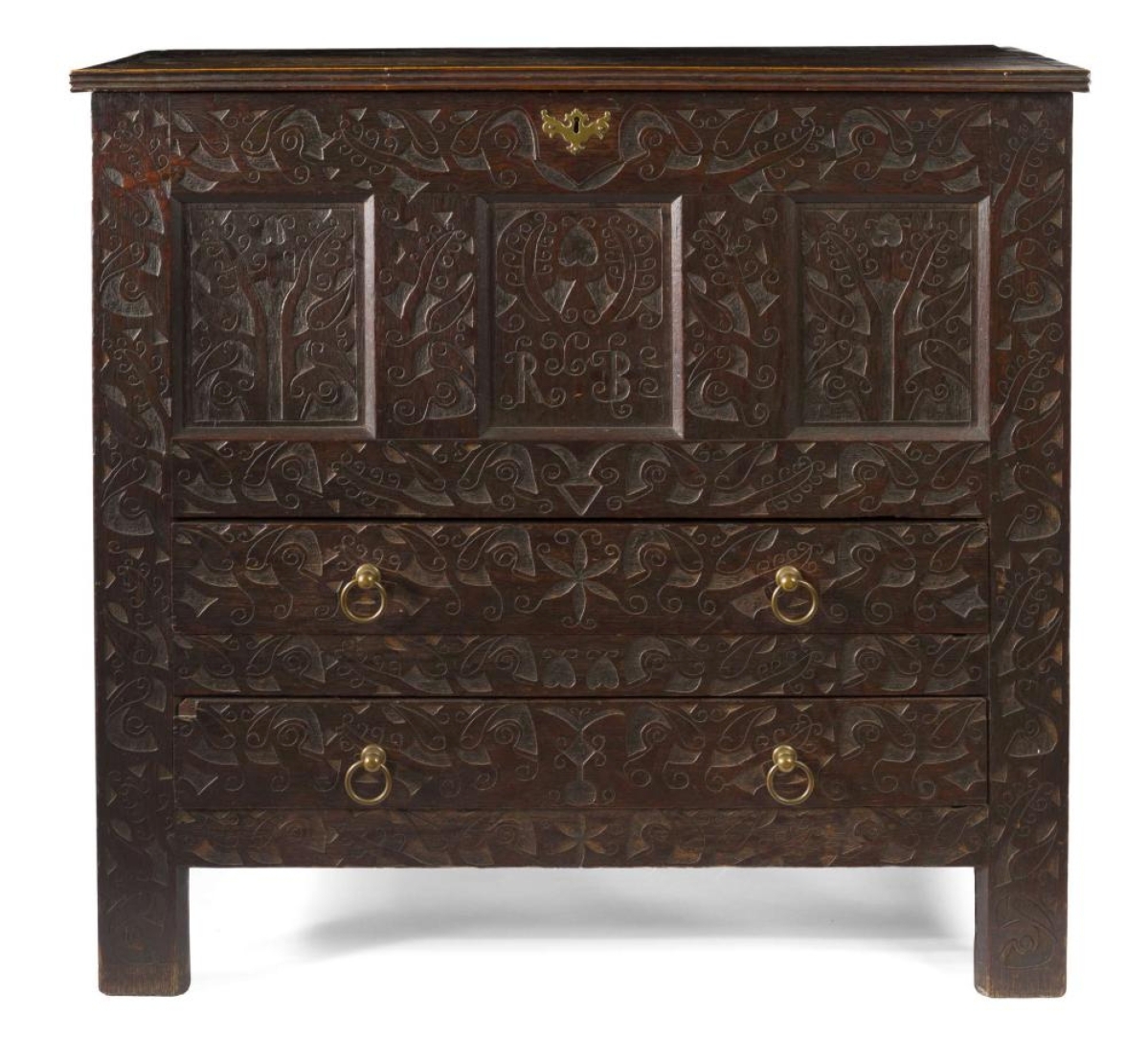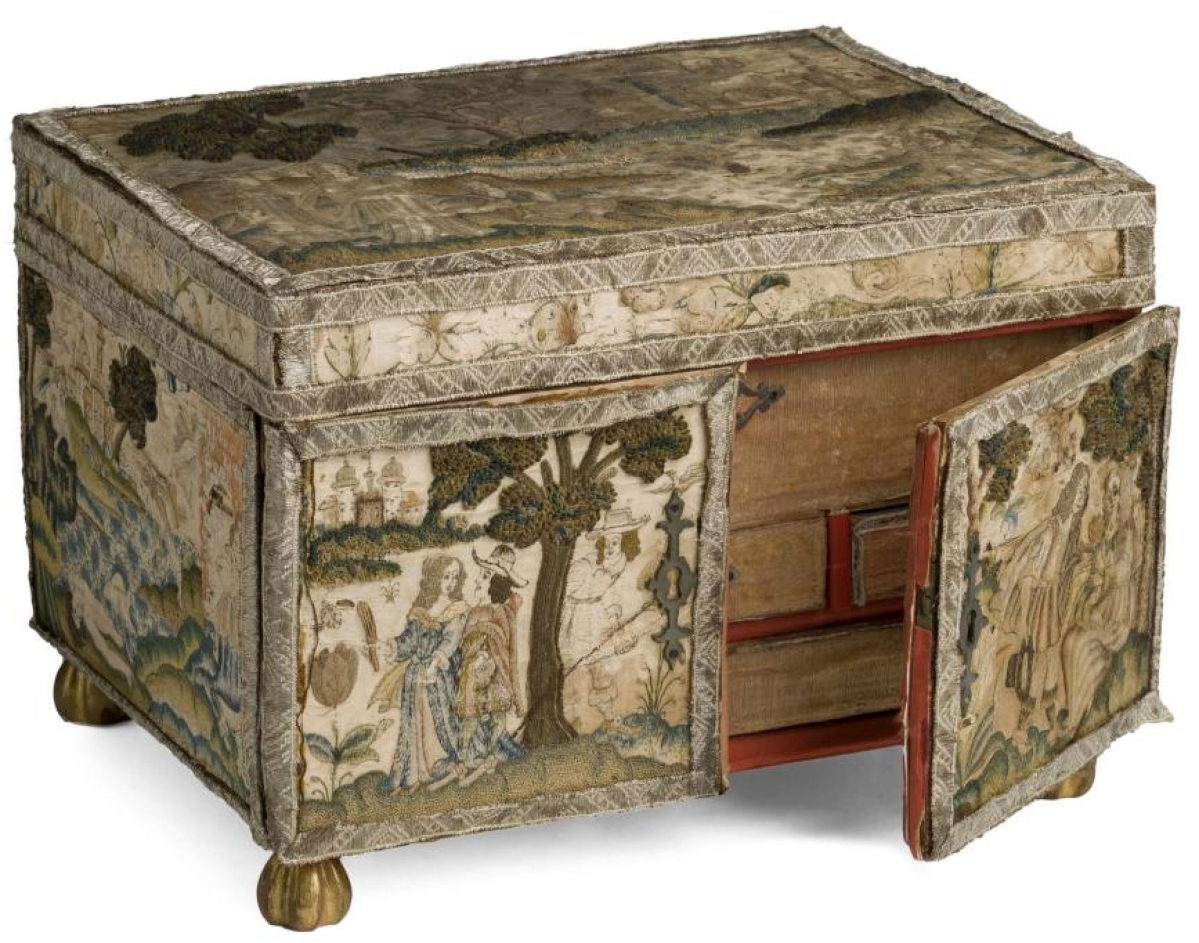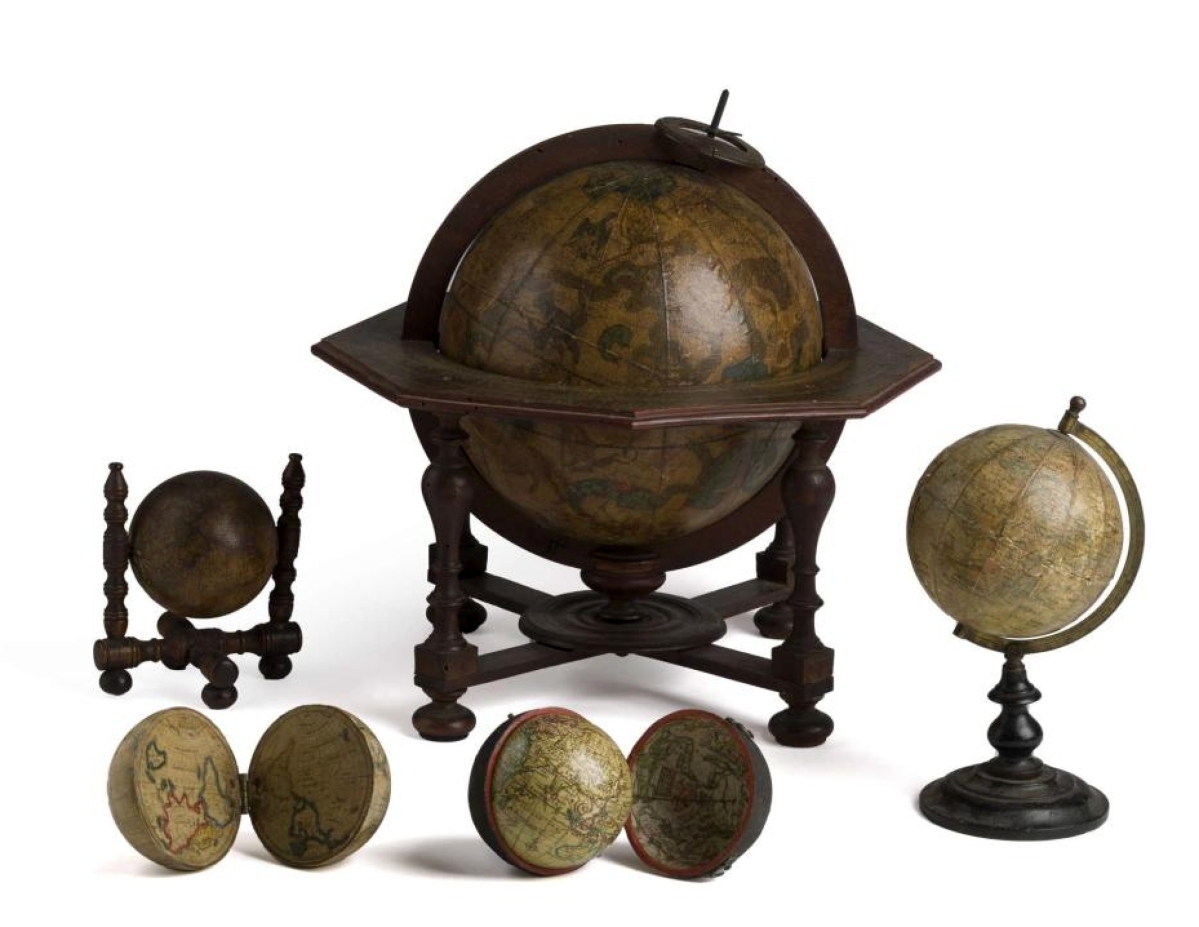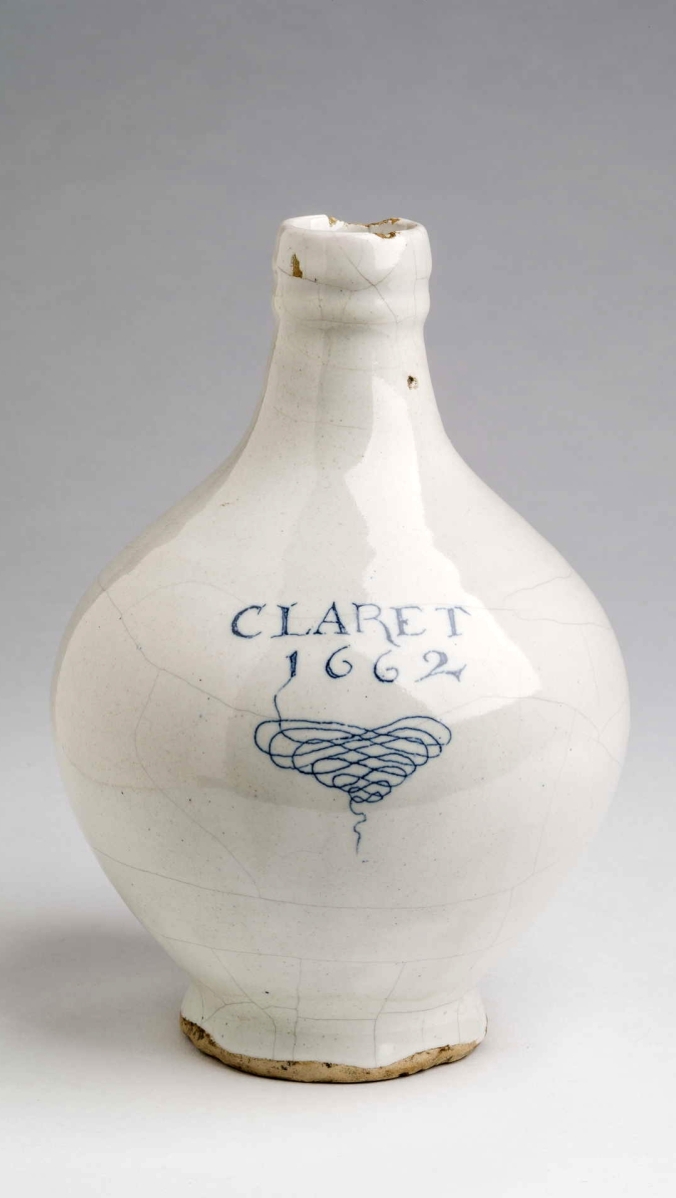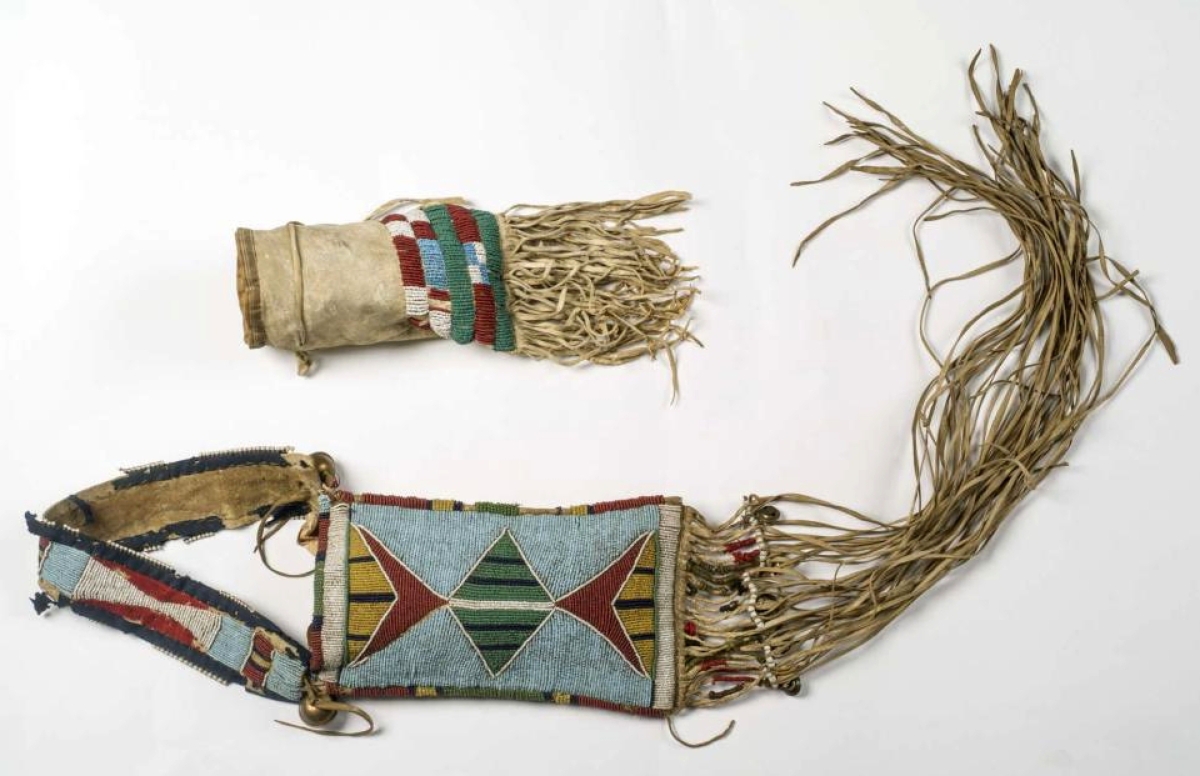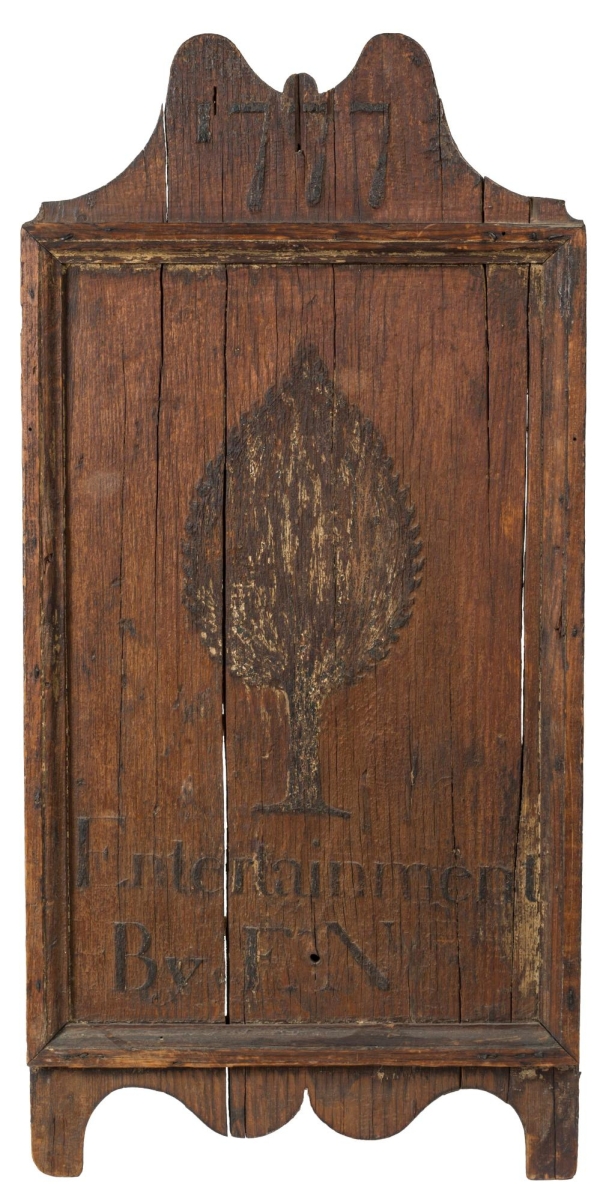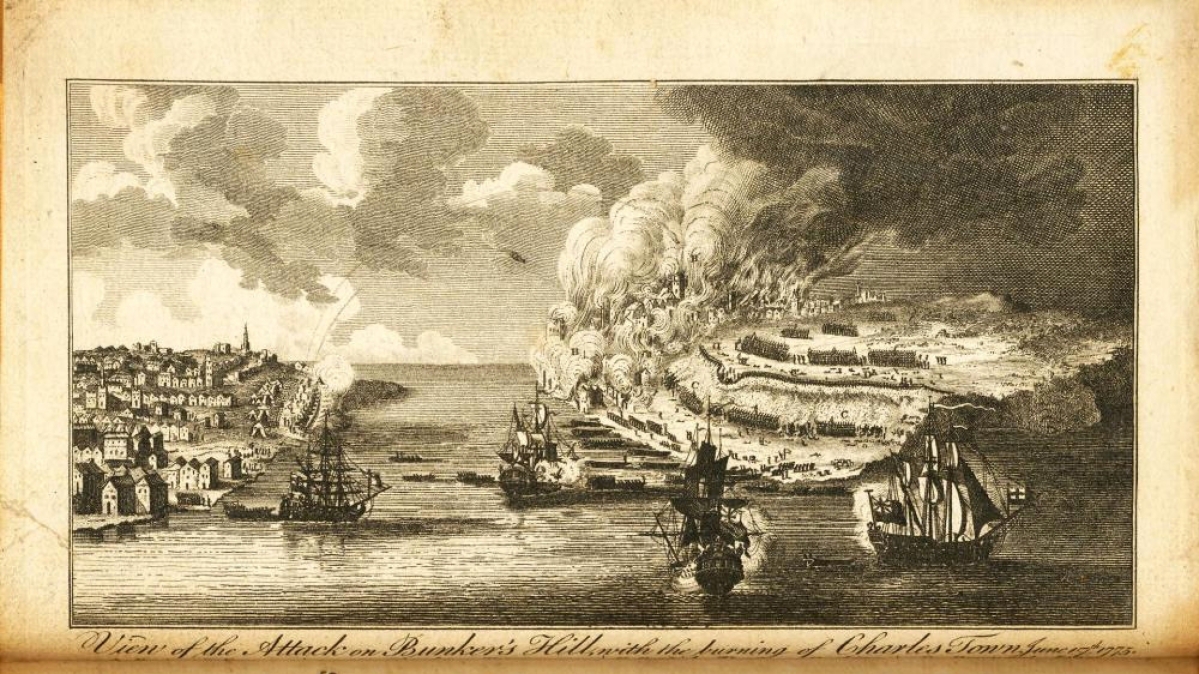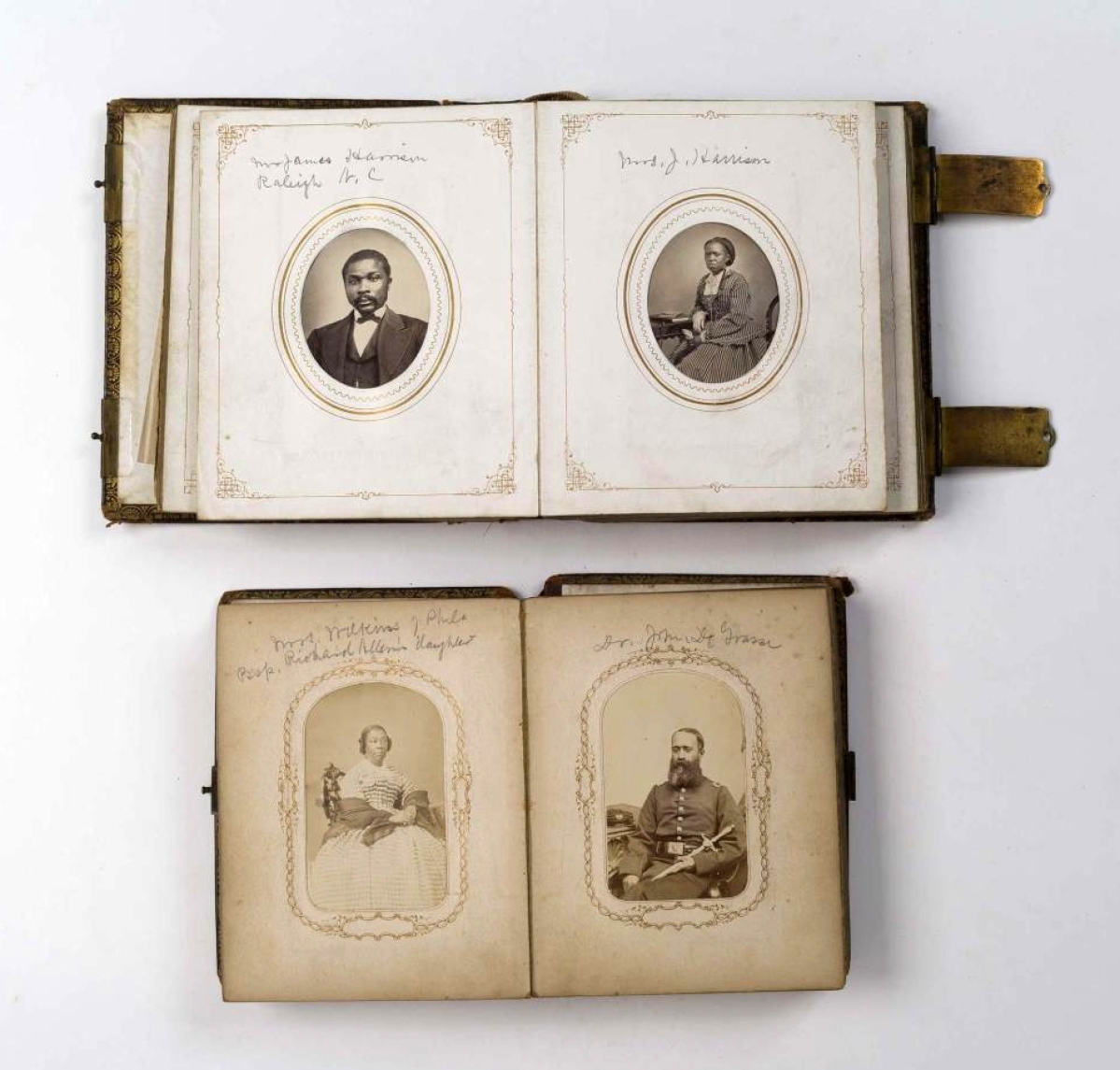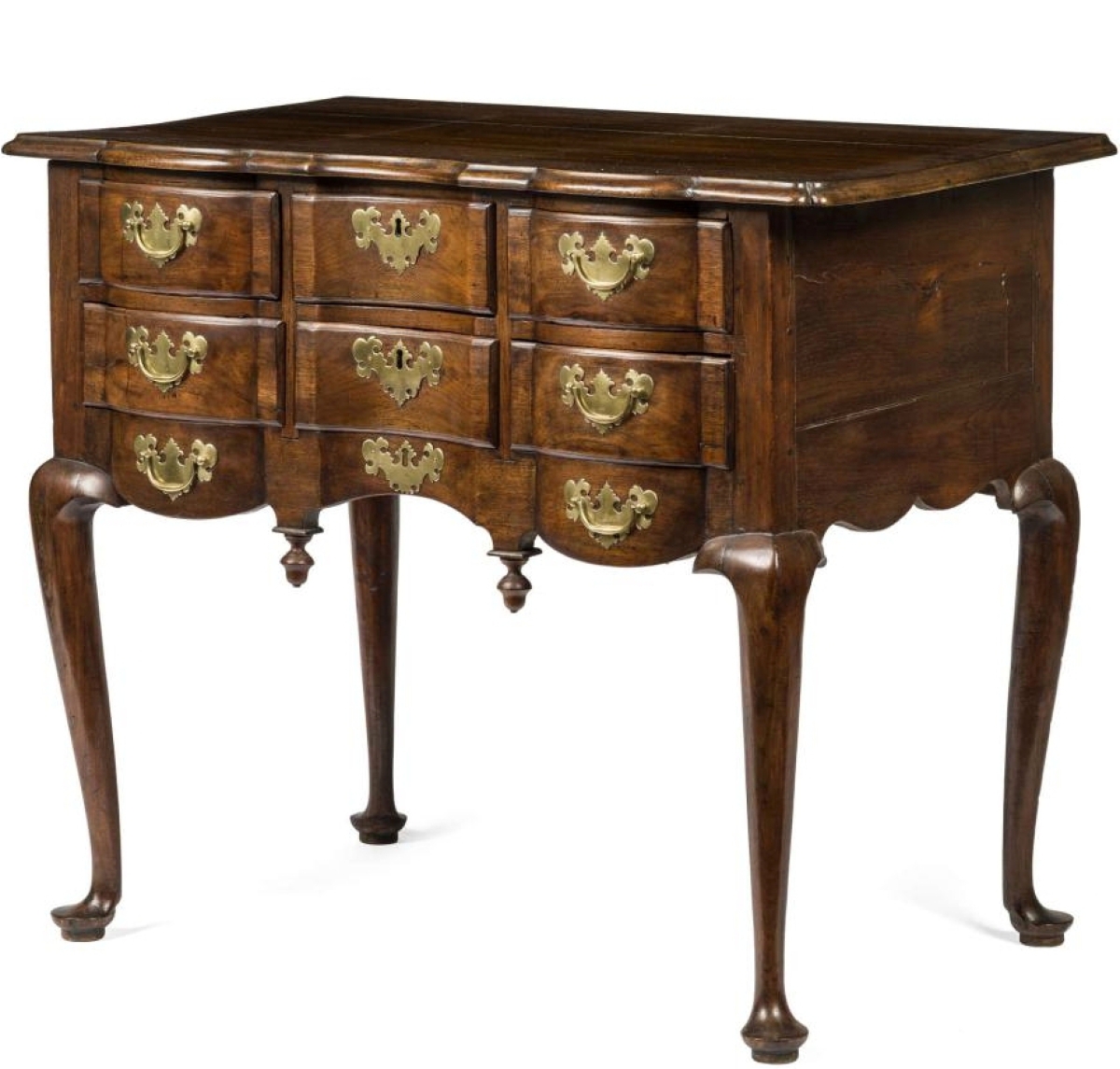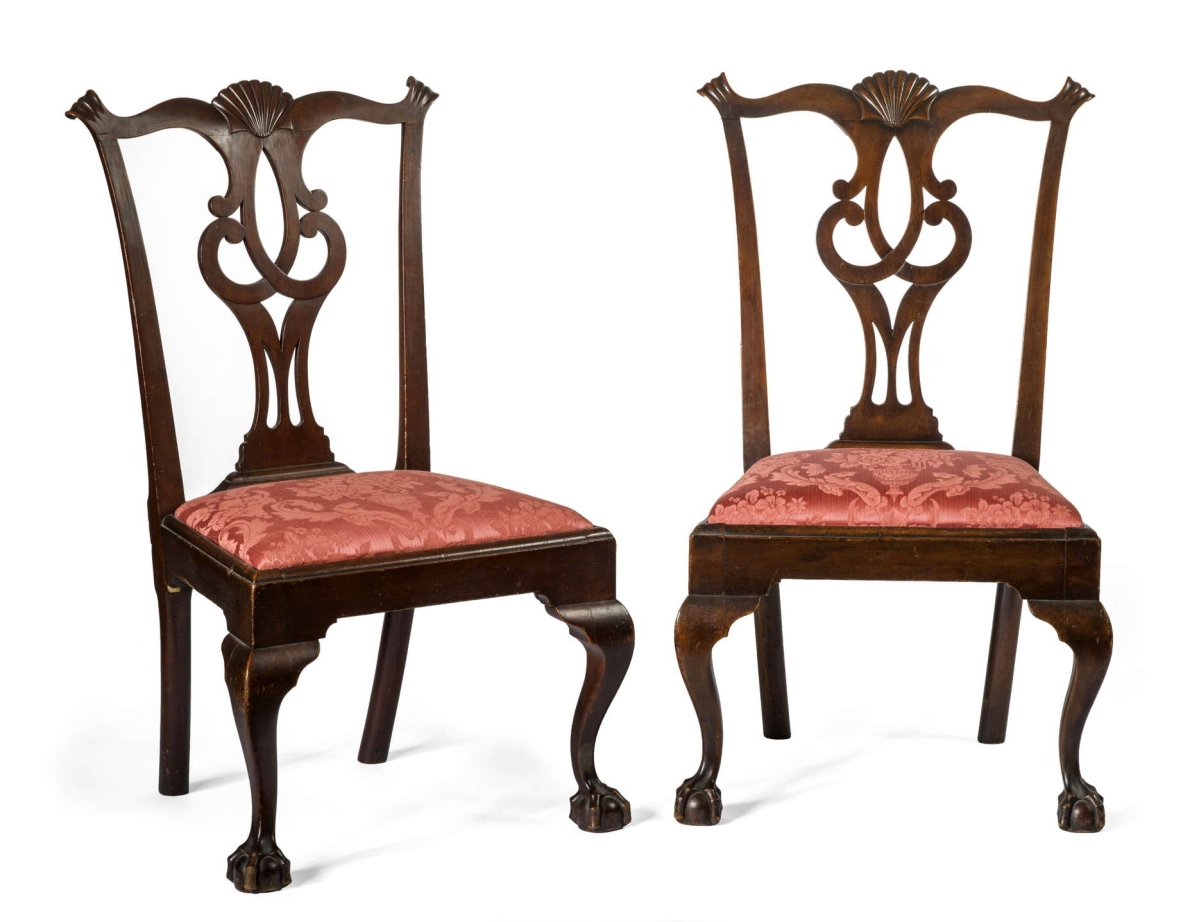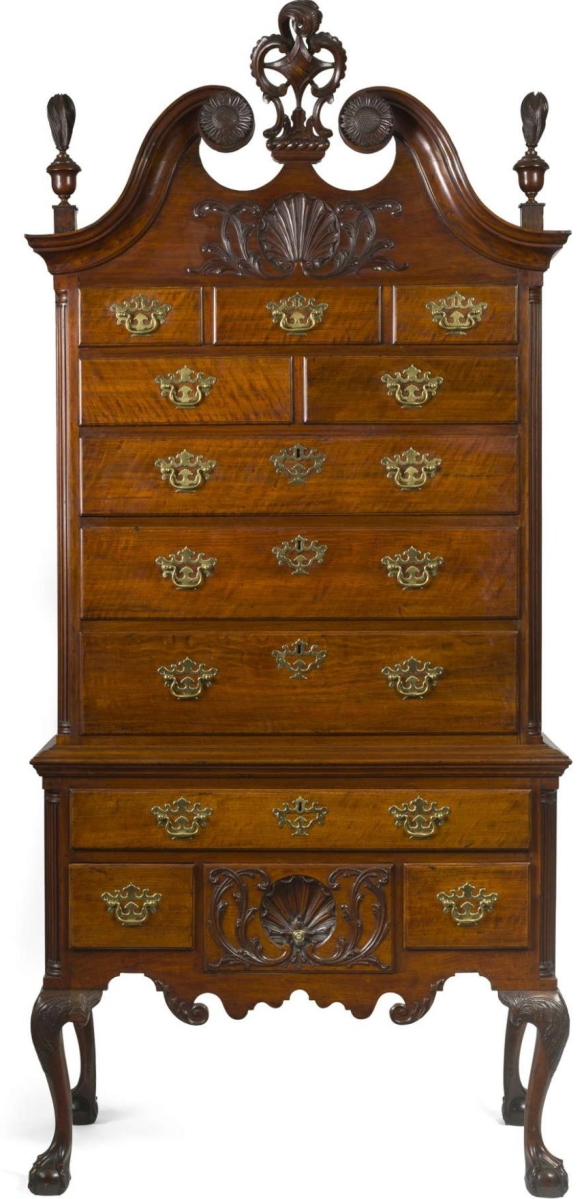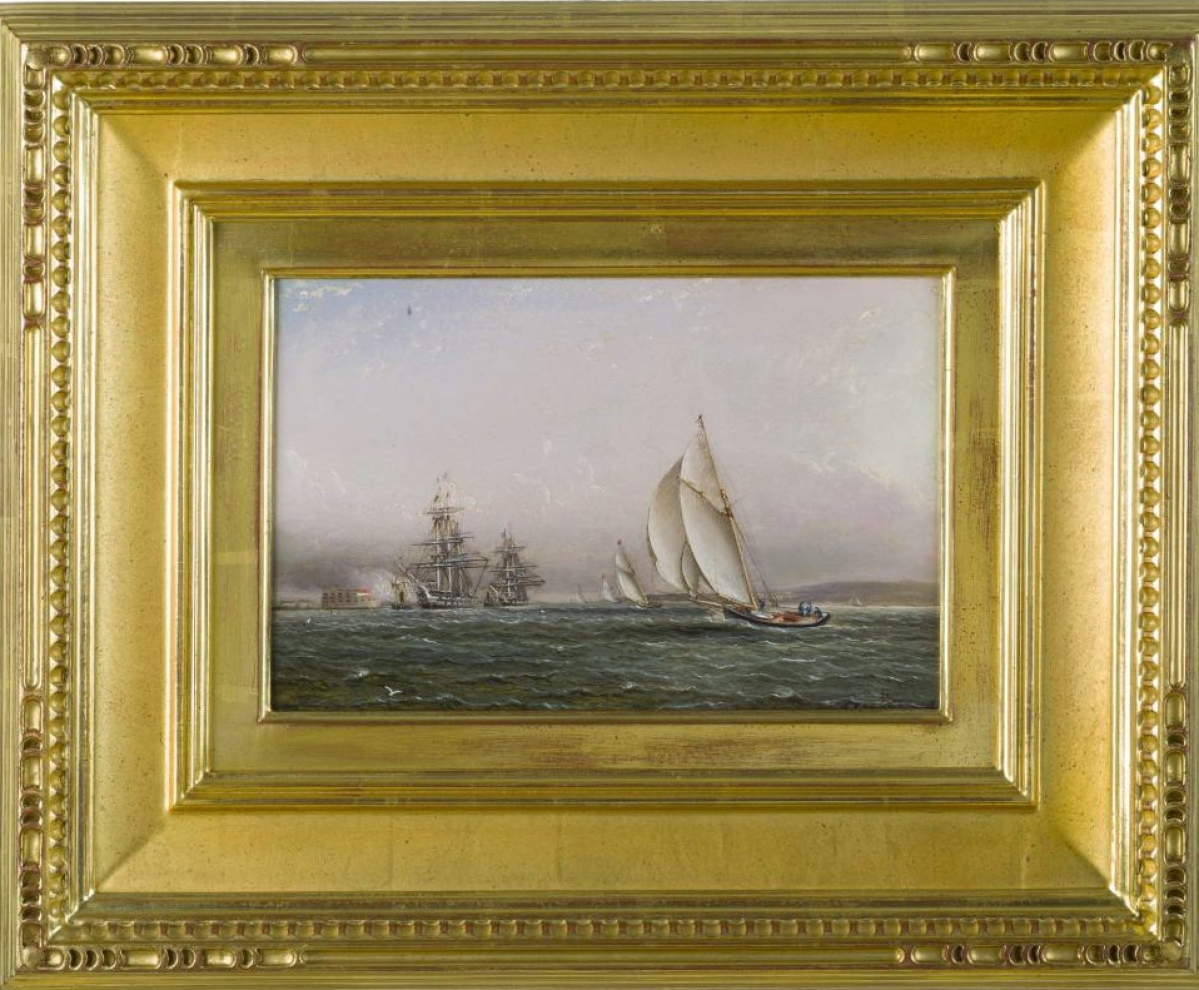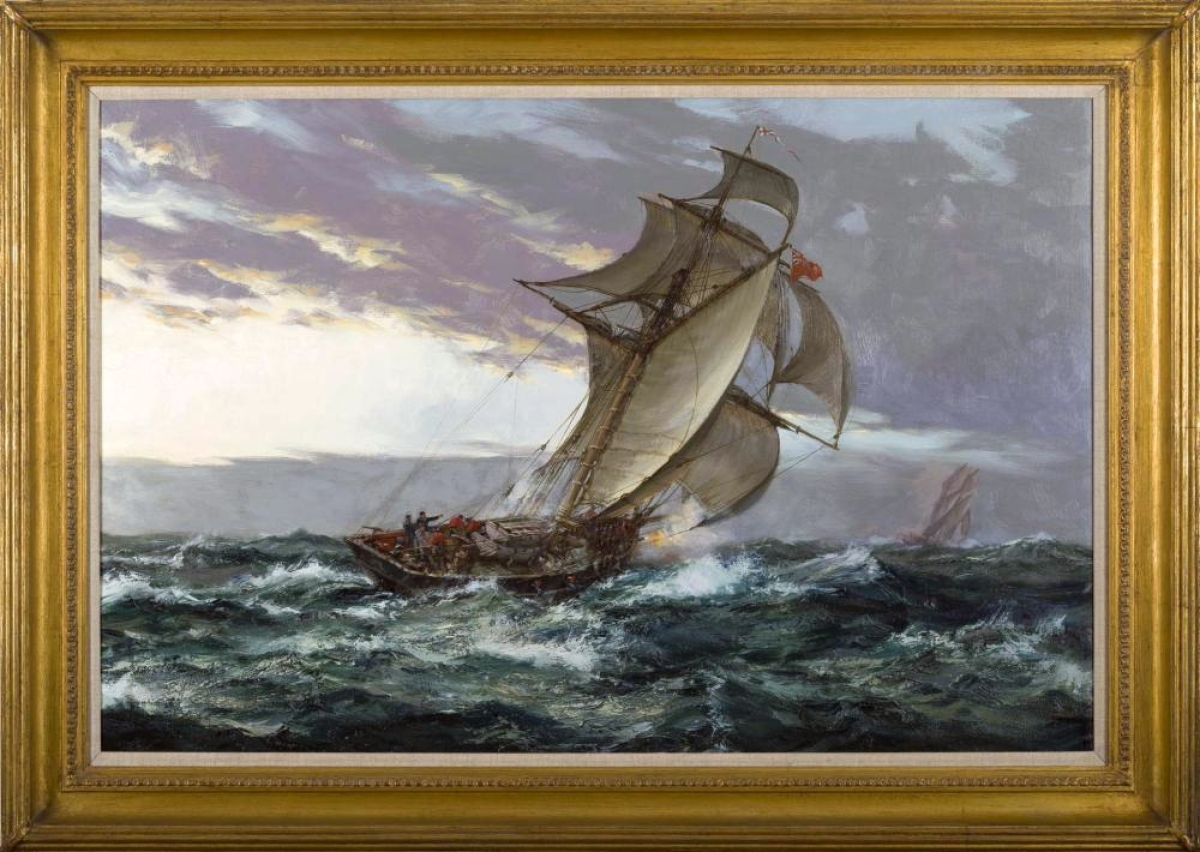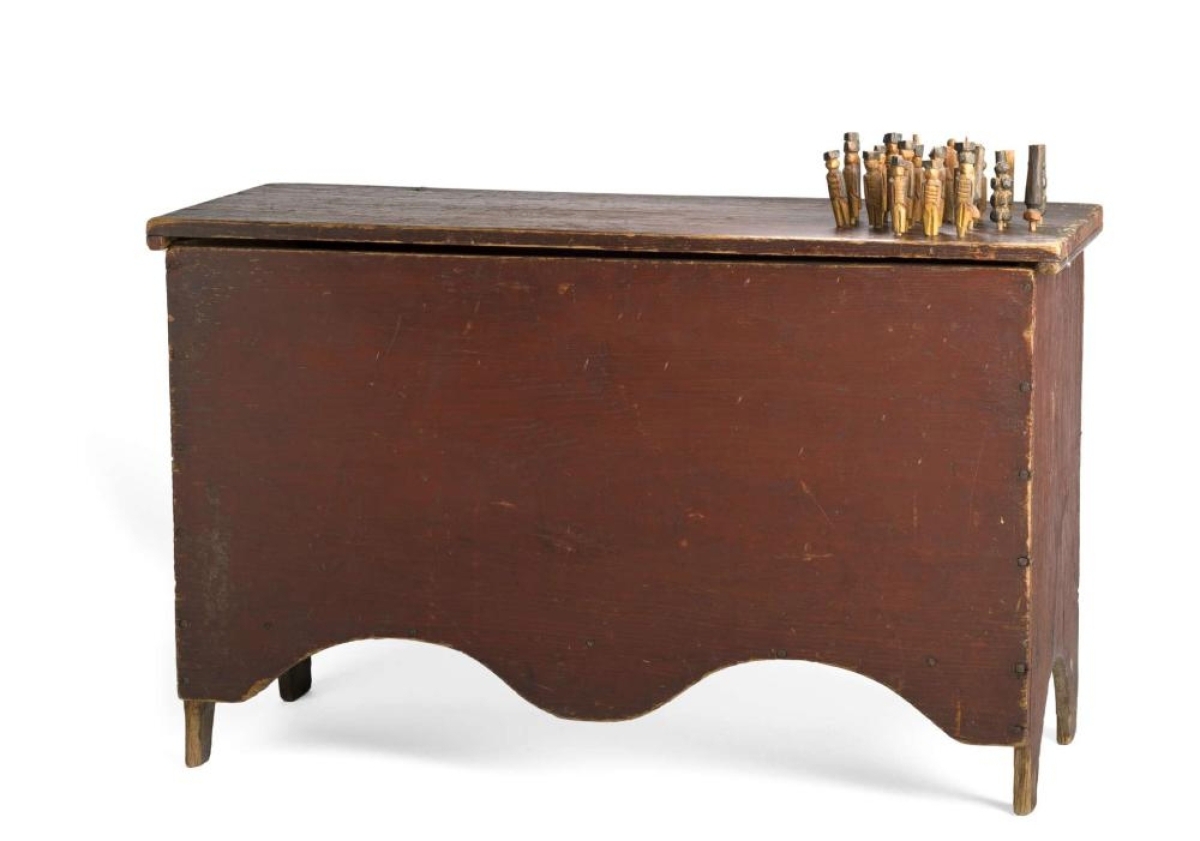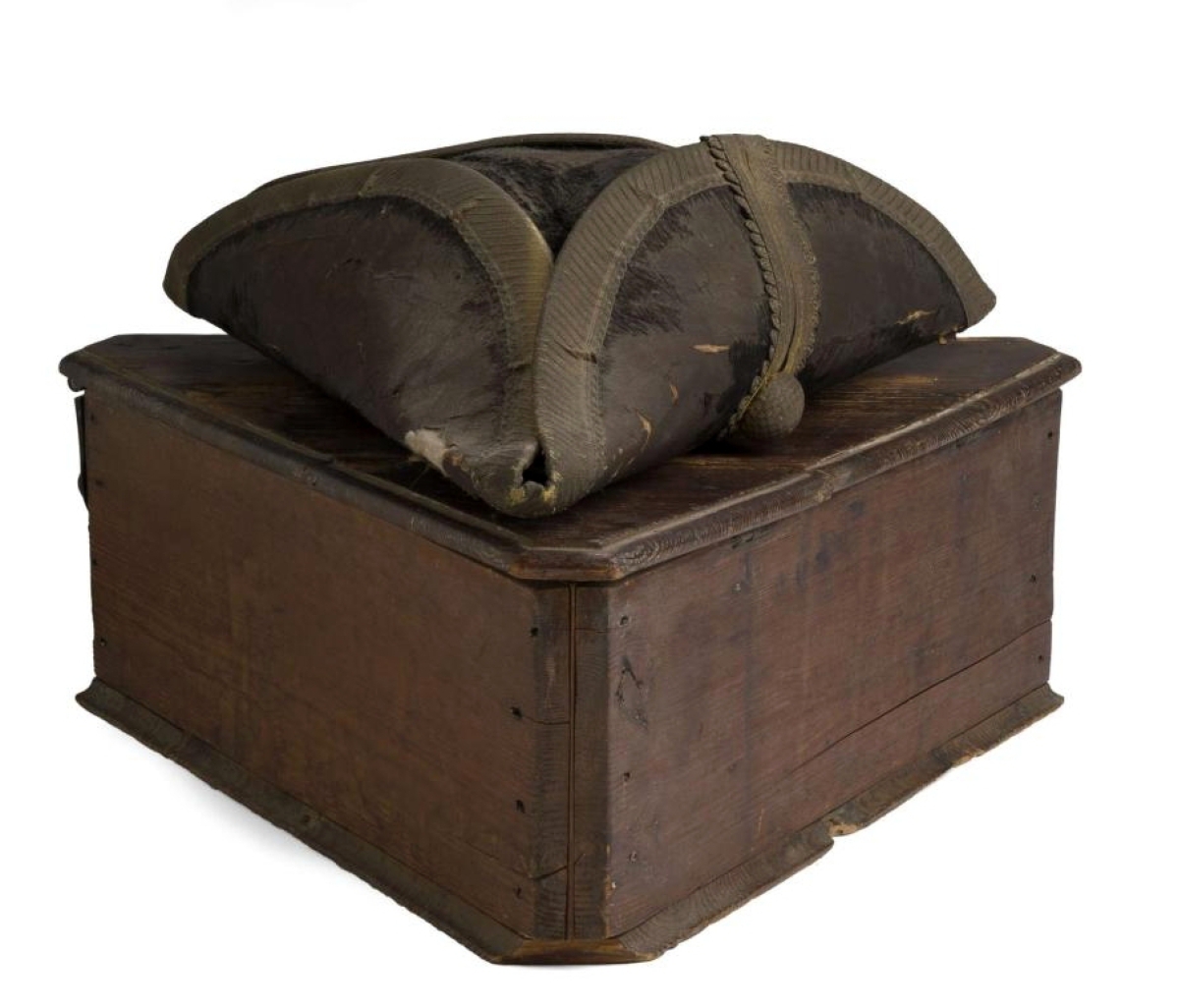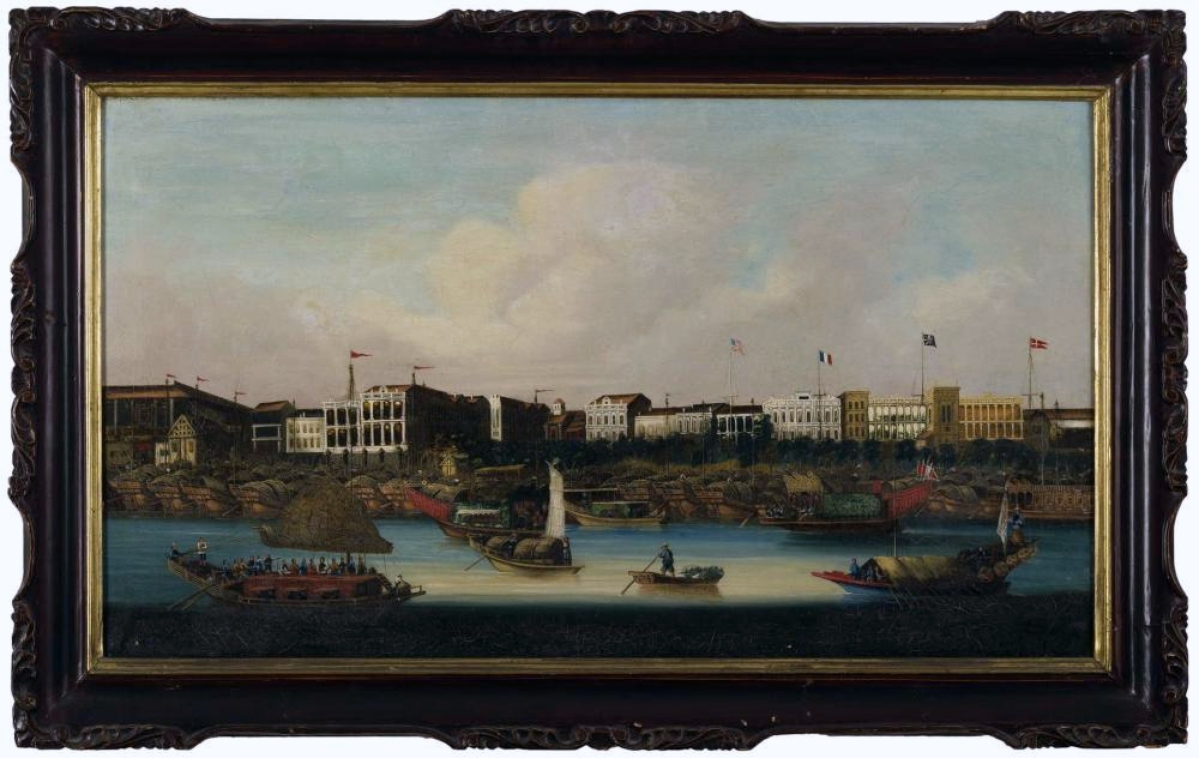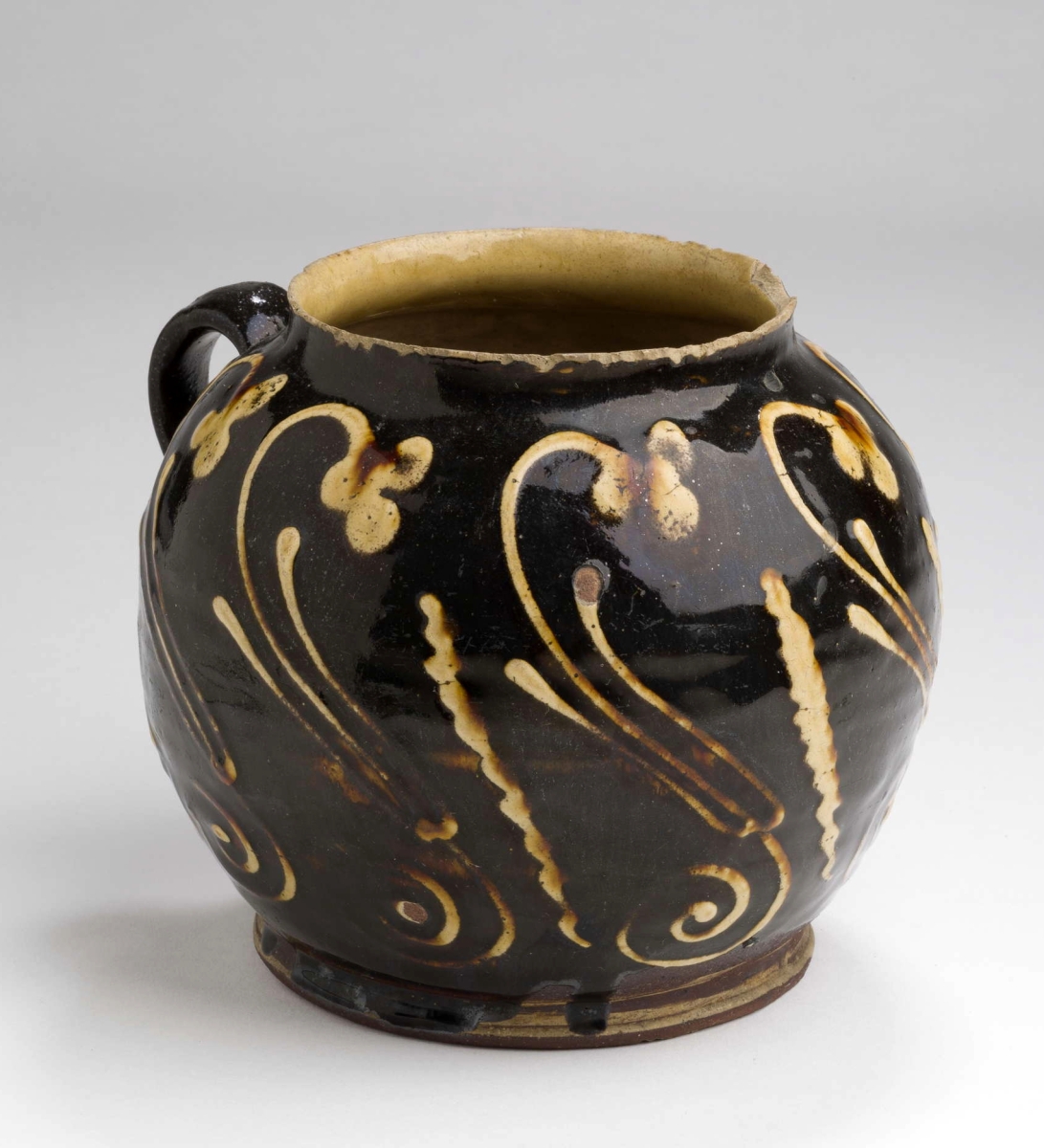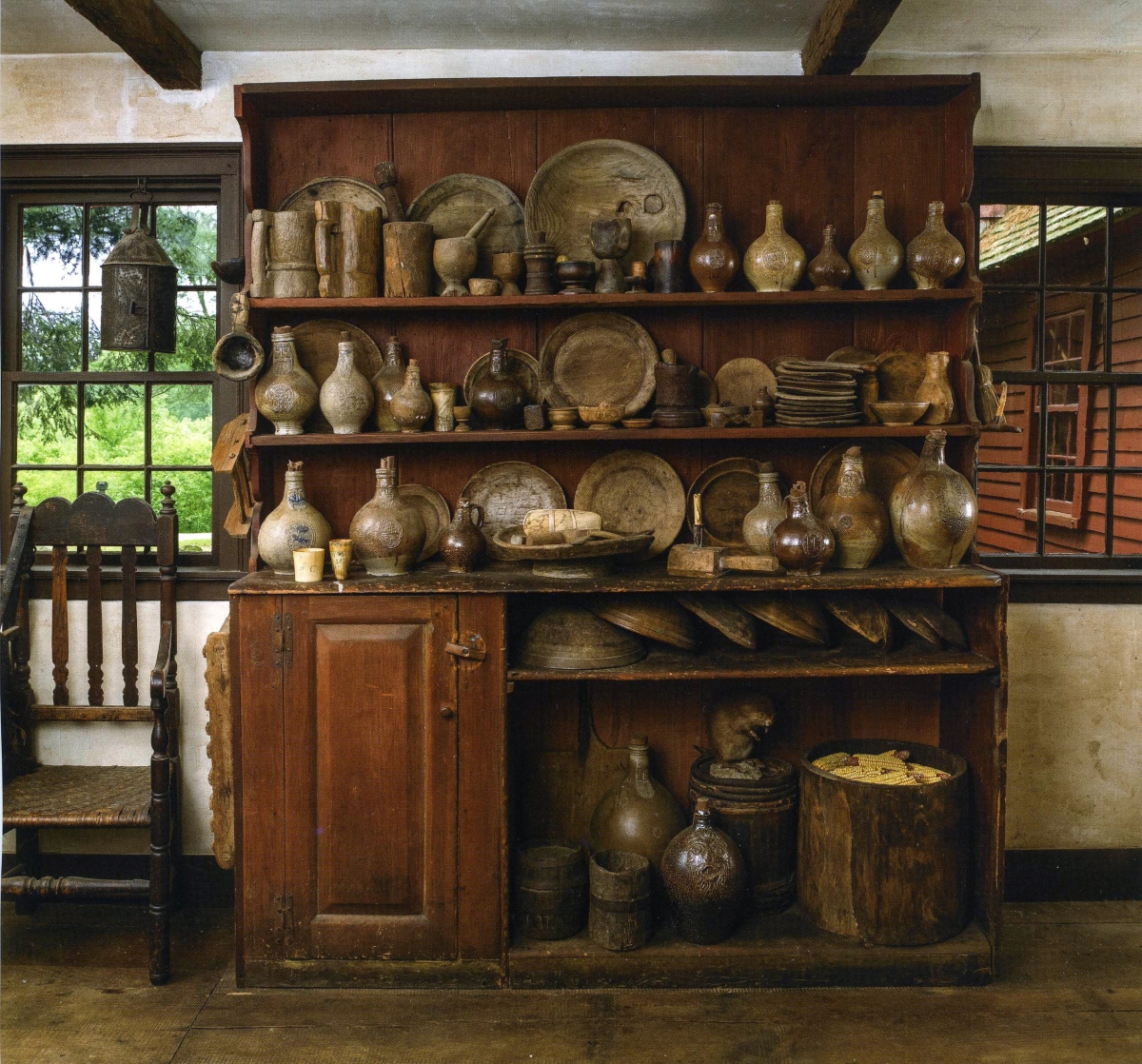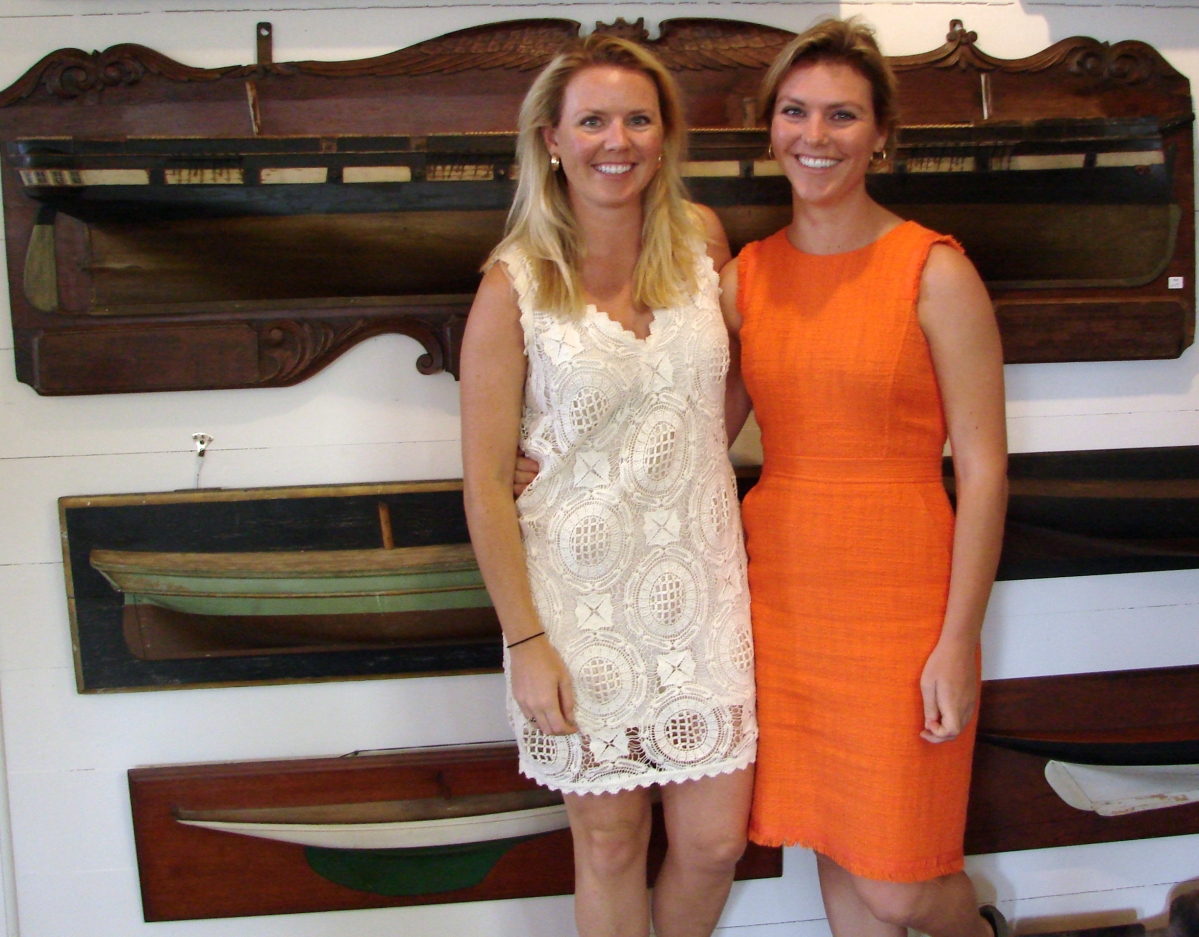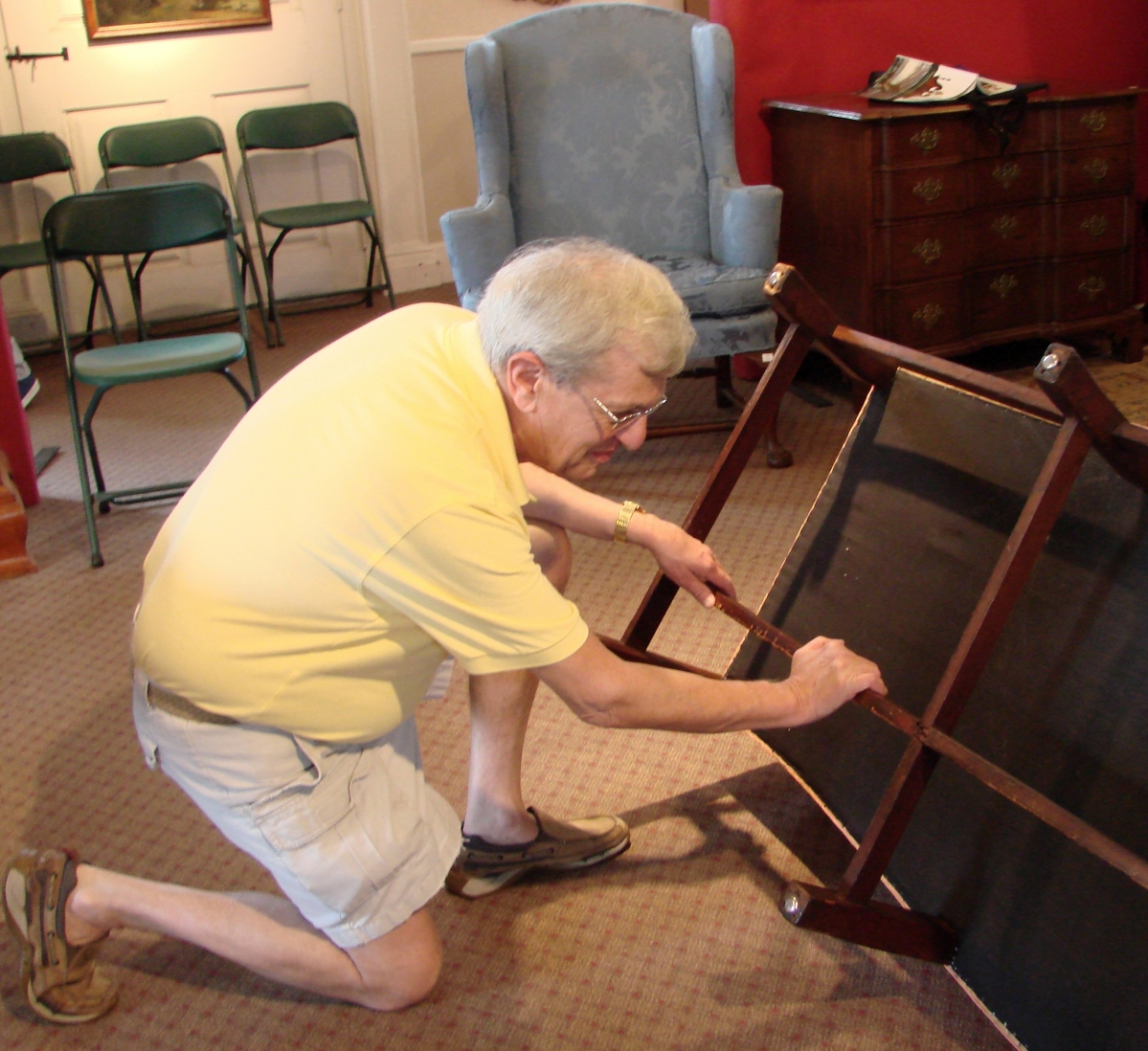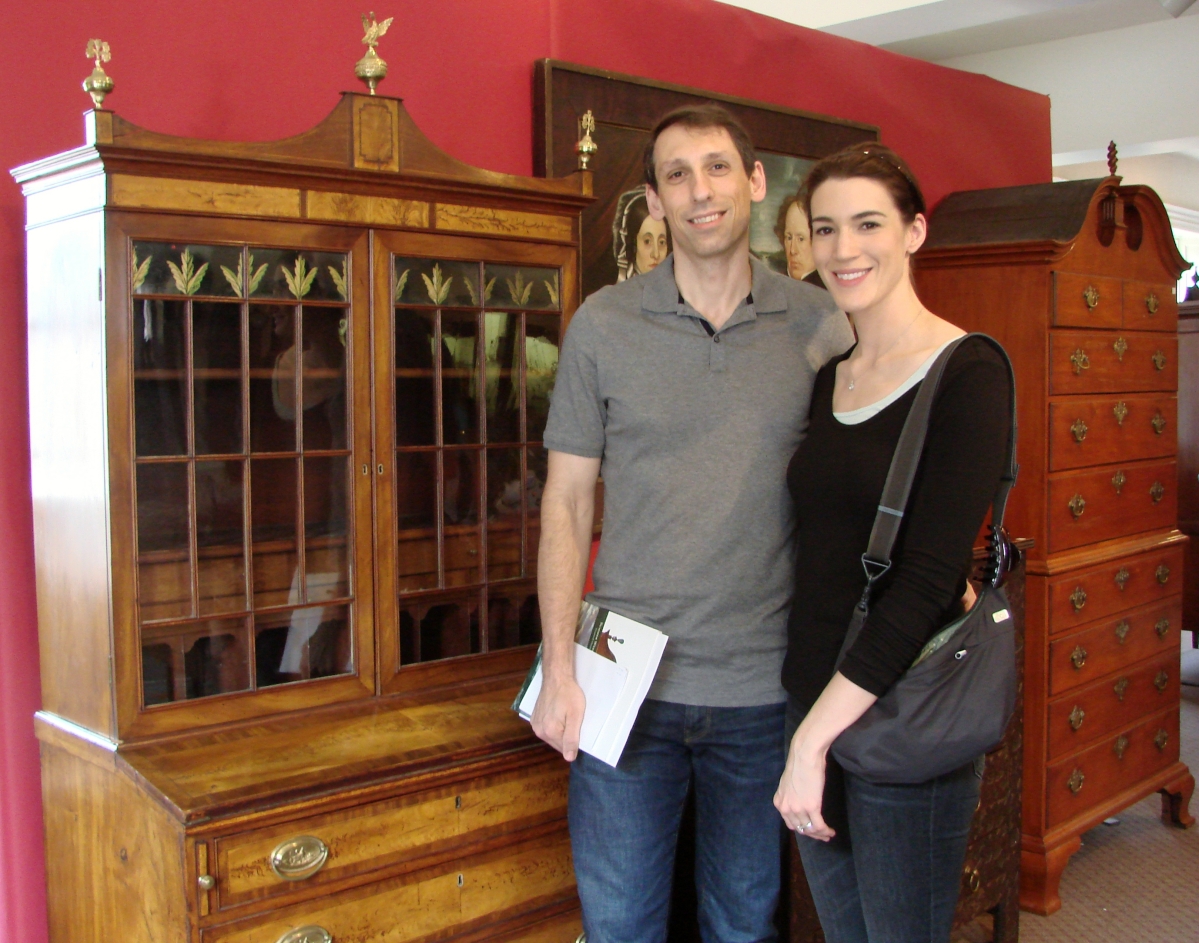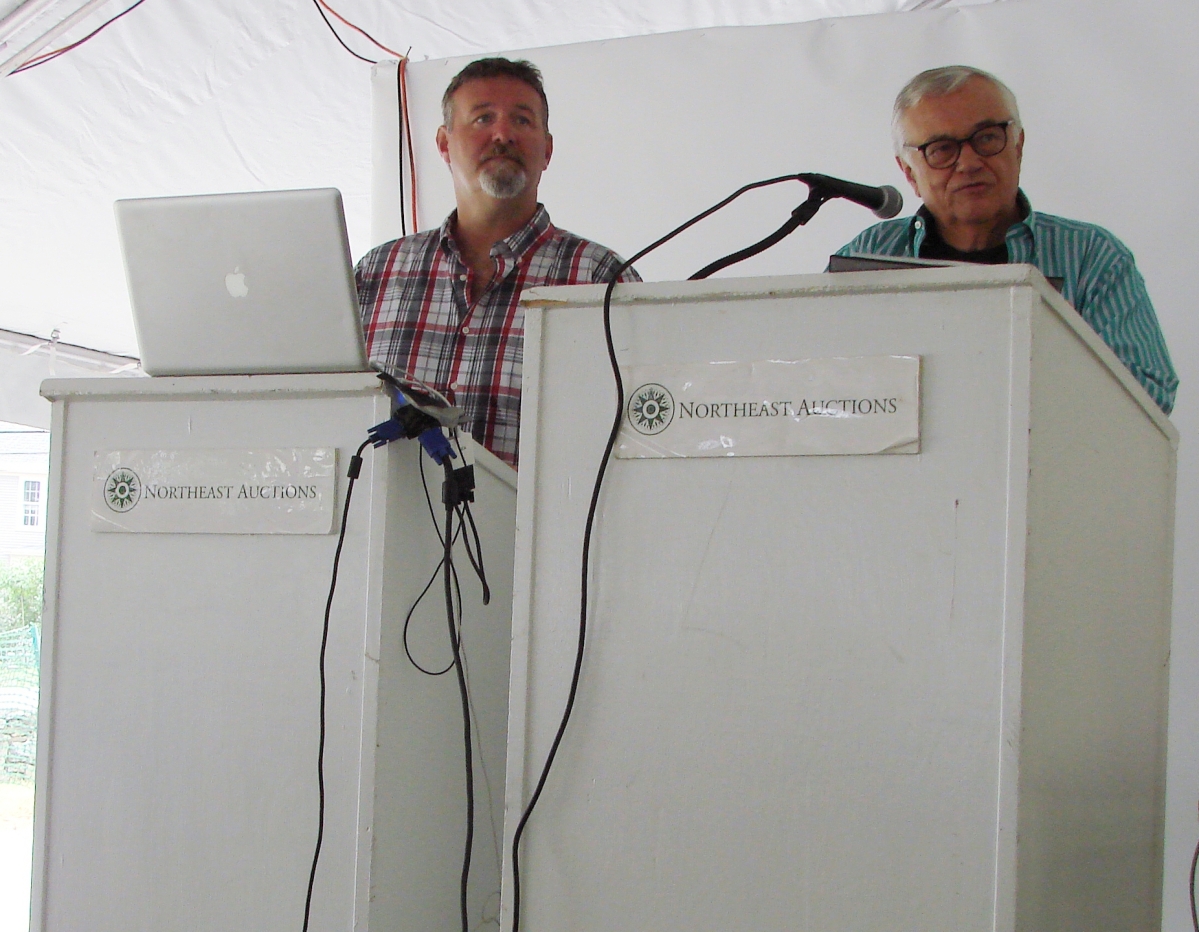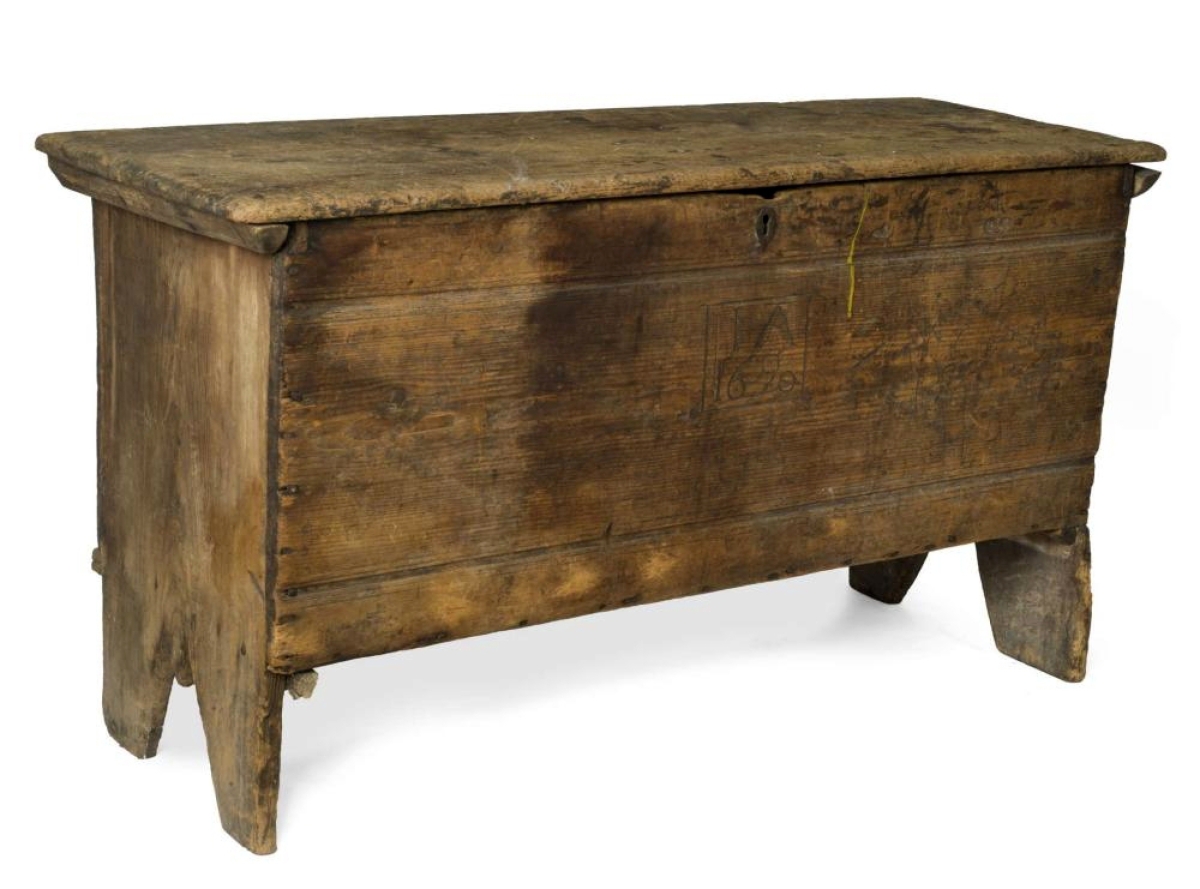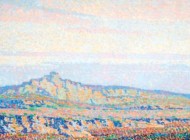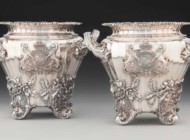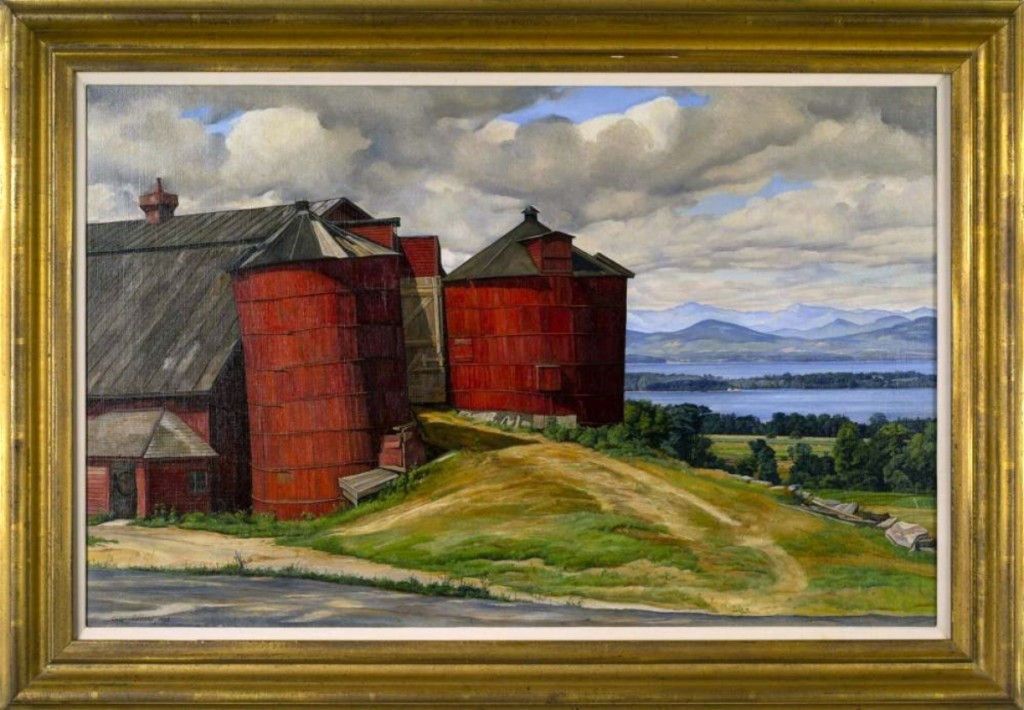
The highest priced item in the sale, “Pillars of Vermont,” a Vermont landscape by Luigi Lucioni (1900–1988), signed and dated 1937, sold for $96,000. It depicted an aged barn and red silos, with Lake Champlain in the background.
Review And Onsite Photos By Rick Russack
PORTSMOUTH, N.H. – Have you been wondering about the strength of the market for early country Americana and the accessories that go with it? Pine furniture in old red, blue and other colors? Treen bowls and plates? Stoneware and redware? Early lighting devices? Early English embroidery and stumpwork? Two auctions, Northeast’s and Skinner’s, within a week of each other, provided definite answers to those questions. That market is alive and well and prices are stronger than they’ve been in quite some time.
Ron Bourgeault’s August 18-19 Summer Sale, which included the Susan MacKay and Peter Field collection of Pilgrim Century furniture and accessories, grossed about $2.5 million. There was strength in American painting, with the top lot of the sale being a Vermont landscape by Luigi Lucioni (1900-1988), “Pillars of Vermont,” which sold for $96,000, while another painting by the artist sold for $76,800. American furniture did well, with a circa 1716 Hadley chest earning $49,200 and a circa 1760 Philadelphia Chippendale carved walnut highboy realizing $26,400. China trade paintings, Currier and Ives prints, early ceramics and historical ephemera all did well.
The two-day sale began with nearly 300 lots from the MacKay-Field collection. In 1986, the husband and wife team, long-time collectors, decided to go into the antiques business, selling what they collected – Pilgrim Century furniture, American or English, and the accessories that would have been in homes of that period. Bourgeault called them “true collectors.” They understood that 200- or 300-year-old pieces have some wear and tear, and perhaps, some restoration. MacKay said, “Make-dos are some of my favorite pieces.” They developed a loyal following of collectors who thought as they did. Pete Field died in 2010. Susan recently remarried and decided it was time to let go of the collection and also sell her 1787 house in Connecticut, which is described in the Northeast catalog. MacKay gave Bourgeault names and addresses of about a hundred of her customers that she knew would be interested in the things being sold. Bourgeault said that only three of the names on that list were known to him. Intelligently, he sent catalogs to each and attributes much of the success of the sale to that group of customers. Several were present for the sale, first-time Northeast customers, and several more were on the phones. Those customers, together with others active on phone lines, resulted in estimates being meaningless in many cases.
Bourgeault said, “The collection was like Roger Bacon’s,” and Sue MacKay said that Bourgeault’s 2001 catalog of the Monahan collection was “their bible.” With those inspirations, it’s not surprising that the collection included slip-decorated wares, bellarmines, early English delft, early glass bottles, embroidery, stumpwork and more. The most sought-after piece of furniture in the collection was a linenfold six-board chest, from the Deerfield area, dated 1690, with the initials “I.A.” According to family tradition, it was purchased by a member of the Howe family in 1690 and remained in the family for 316 years until MacKay bought it at an auction at the Howe family home in Poultney, Vt., in 2007. The chest sold for $26,400, close to what she paid for it in 2007. A New Hampshire decorated pine bible box, in red paint, from the Hampton, N.H., area sold for $6,600, and a Connecticut “sunflower” two-drawer blanket chest reached $6,300. The recognizable tulip and sunflower design is associated with Wethersfield cabinetmaker Peter Blin (circa 1640-1725).
Accessories or items that would have been in Pilgrim Century homes included several slip-decorated earthenware pieces, one of which was an early Eighteenth Century honey pot with handle, decorated with curved flower stems in cream-colored slip, probably made in Staffordshire, that sold for $4,800. A slip-decorated loaf dish from the same period, with three rows of undulating lines, ended up at $2,640. Three London blue and white delft wine bottles did well: a “Claret” bottle dated 1662 sold for $6,000, a “Sack” bottle dated 1650 went for $4,800, and a “Whit” bottle earned $3,240. There were numerous other pieces of early English delft. A less common accessory was a late Eighteenth Century tricorn hat, housed in a pine and wrought iron tricorn hat box. The hat was decorated with ribbon and gold cockade and the box had snipe hinges and hasp. It realized $7,000, well over the estimate.
The MacKay collection included several stumpwork pictures and boxes. Selling for $10,200 was an elaborate silk and stumpwork picture of a banquet. It showed several men and women seated around a table laden with dishes, a servant pouring wine, trees, insects, flowers and a manor house in the distance. It realized $10,200. An unusual three-dimensional stumpwork picture of an enthroned King Charles I holding a pearl scepter while seated beneath a crown brought $4,800. There was age-appropriate wear on the embroidered needlework boxes.
A Seventeenth Century sewing and writing casket with hinged doors, three drawers and open shelves on carved feet was embroidered with an elaborate landscape on the top, several figures, a hunting scene, another panel with a drowning man and more. It sold over the estimate for $8,160. In total, the MacKay collection grossed $566,000.
Following the MacKay collection, another 676 lots were offered, including some of the highest priced items in the sale. Lucioni’s “Pillars of Vermont” depicted an aged barn and red silos, with Lake Champlain in the background. It was signed and dated 1937. The painting was also the basis for an etching of the same title by the artist. Lucioni began spending summers in Vermont after he was commissioned by Electra Havemeyer Webb, founder of the Shelburne Museum, to paint a Vermont landscape as a wedding gift for her daughter. He eventually bought a home in Manchester, Vt. The $76,800 painting, signed and dated 1940, was a view of a stand of birch trees on a golf course in Manchester. Works by James E. Buttersworth and Montague Dawson also did well.
Early furniture included a two-drawer circa 1716 Rhoda Belding Hadley carved and joined oak chest that had been made in Hampshire County, Mass. The chest had three recessed panels with tulip, leaf and heart motifs and the owner’s initials, “RB,” on the center panel. The lid was an old replacement. It was bought by Jim and Janet Laverdiere of Marblehead. They paid $49,200 for it, and it will have company in their home as they own other early furniture and ceramics. An early hooded pine settle in Spanish brown paint, which had been part of the Blum collection, sold for $7,200. The curved sides had primitive handholds, and there was storage space under the seat.
Good, formal furniture is a fixture at Northeast’s August sales, and this year was no exception. A pair of Connecticut Chippendale cherry side chairs attributed to Eliphalet Chapin, East Windsor, sold for $28,800. The chairs each had a shell carved serpentine crest with carved ears and pierced splat backs. A Philadelphia Chippendale carved walnut highboy, circa 1760, with a scrolled pediment and carved sunflower rosettes went to a phone bidder for $26,400. A Boston Queen Anne mahogany block front dressing table had notched corners, a shaped apron with acorn pendants and it sold for $18,000. Six phone bidders competed for a circa 1758-60 Massachusetts Queen Anne mahogany wing chair attributed to James Graham. The successful bidder paid $8,800, more than twice the estimate. A Roxbury-cased Elnathan Taber tall case clock, warranted for Wilson Hawley, sold for $10,800. The case had pierced fretwork, and the works had a moon phase dial with second and date registers.
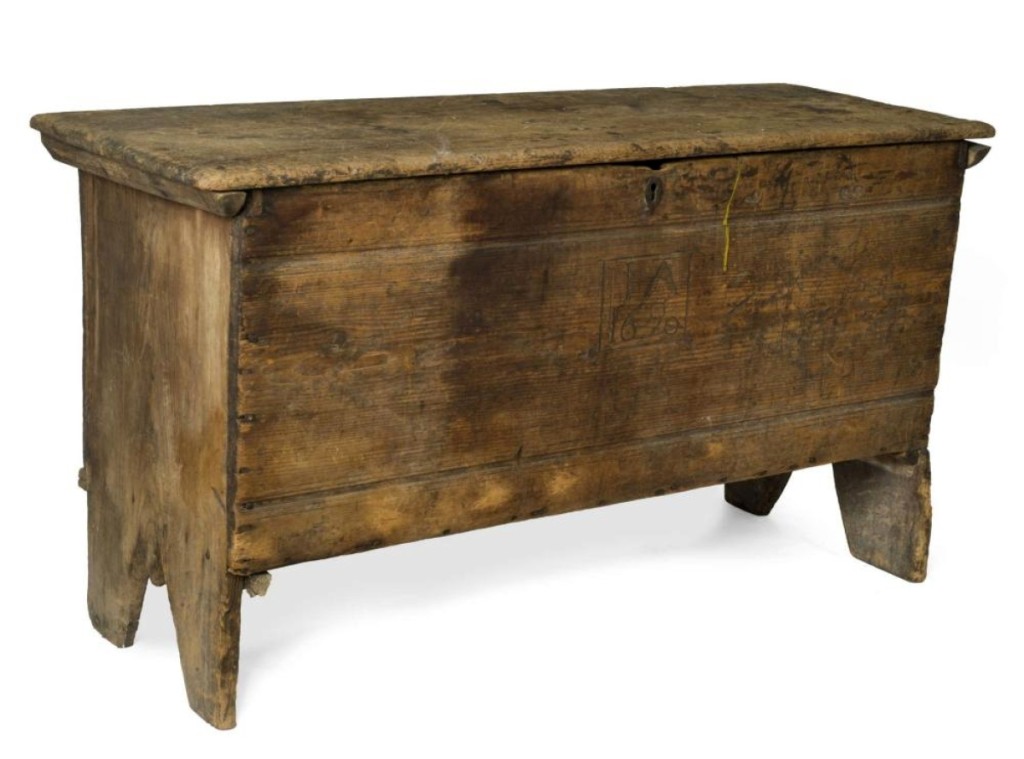
Dated 1690, this linenfold six-board chest was made in the Deerfield area. It had the initials of its first owner, “I.A,” and had remained in the original family. It realized $26,400.
There were some items that demonstrated why auctions are fun and full of surprises and illustrated that the best thought-out estimates may sometimes be meaningless. One lot included five pocket and tabletop globes, one of which was cataloged as a reproduction. The lot was estimated to sell for $5,000 but wound up at $19,200. One was a 3-inch terrestrial globe on a stand and another a hinged pocket terrestrial globe with engraved gores with outline coloring.
Another lot, simply described as two Native American beadwork bags, estimated at $800, sold for $16,800. Neither tribe nor age was mentioned in the description but, obviously, at least two people believed them to be special. And a lot that was expected to do well did much better than expected. A collection of 72 cartes-de-visite of prominent African American abolitionists, mounted in two period albums, one of which was dated 1863, was estimated to sell for $8,000 but wound up finishing at $48,000. The albums had been assembled by Harriet Bell Hayden and her husband, Lewis, who had escaped slavery in Kentucky. Their Beacon Hill home was a boarding house and also served as a stop on the Underground Railroad. Six phone bidders competed for it.
A few days after the sale, Bourgeault said that the level of interest was high and that the sale did well. “It was a large and enthusiastic crowd. Some of the items passed during the sale were sold the next day, like the fabulous pair of John Wallaston portraits. They were important historical paintings and an interested collector talked to me the next day. So we wound up at about $2.5 million. The level of interest in the MacKay collection was a pleasant surprise. The customers whose names Sue provided were very active. It seemed like there were phone bidders on almost every lot. There were more than 250 and some of them stayed on for several lots. Altogether, we had more than 570 registered bidders, not including the online bidders. Interest is definitely up and prices are moving up, and I’m feeling very optimistic about the future of the stuff we’re dealing with.”
All prices given include the buyer’s premium, as reported by the auction house. For more information, 603-433-8400 or www.northeastauctions.com

